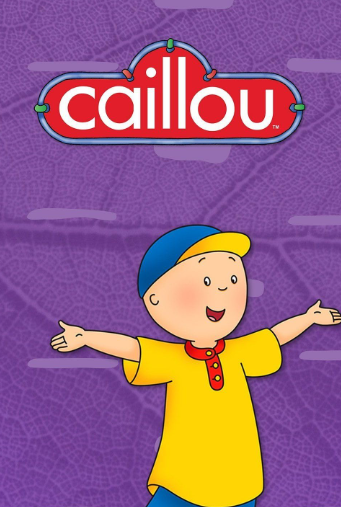What’s Wrong with the Caillou Show?
- Asia Mmkay
- Jul 30
- 4 min read

What’s Wrong with the Caillou Show?
At first glance, Caillou looks like your standard preschool program: calm narration, colorful but simple animation, and a curious little boy learning life lessons. Seems harmless enough, right?
But many parents, educators, and even casual viewers have expressed frustration with the show. It’s not because it features a four-year-old acting like a four-year-old—it’s because the way Caillou presents his behavior lacks meaningful guidance, growth, or consequences.
So let’s dive into why Caillou, despite its innocent surface, might not be the best influence for young viewers—and why it leaves so many adults grinding their teeth.
1. Caillou Whines… Constantly
Whining is a normal part of early childhood development—toddlers are still learning how to communicate their needs and regulate emotions. But Caillou takes it to an entirely different level.
Almost every episode features Caillou whining, crying, or throwing a tantrum when he doesn’t get his way. That wouldn’t be so bad if the show used those moments to model how to handle disappointment or big emotions. But instead, Caillou often gets rewarded for his meltdowns. The lesson isn’t “use your words” or “let’s find another solution.” It’s “if you whine long enough, someone will cave.”
Children watching the show aren’t learning how to manage their emotions—they’re learning that being upset is a tool to get what they want. That’s a major problem. Preschoolers need help developing emotional intelligence, not validation for unproductive outbursts.
Parents find themselves having to “un-teach” behaviors that kids mimic from the show. If you're a parent who’s ever heard your child repeat, “But I don’t want to!” in that iconic Caillou tone, you know how deeply frustrating this can become.
2. No One Holds Him Accountable
Caillou’s parents are endlessly patient—so much so that they cross into the territory of being passive. In almost every episode, they offer gentle words of understanding, rarely ever setting firm boundaries or offering consequences for bad behavior. And while calm parenting is important, it’s only effective when paired with structure and guidance.
What the show unintentionally promotes is permissive parenting: Caillou misbehaves, has a tantrum, and is immediately comforted or accommodated without being encouraged to make better choices. There’s a lack of follow-through. Rarely do his parents say, “That behavior wasn’t okay, and here’s what we can do instead.” This sends the wrong message—not just to kids, but to parents watching alongside. Children need reassurance, yes—but they also need rules, boundaries, and accountability to grow into respectful and responsible people. Caillou's home environment, while well-meaning, avoids meaningful correction in favor of instant validation.
3. Caillou Doesn’t Grow as a Character
The best children’s shows feature characters who evolve. Think of Daniel Tiger, who learns emotional tools and songs to help navigate new situations. Or Bluey, where each episode includes subtle lessons about patience, sharing, or empathy.
Caillou, on the other hand, remains static. Episode after episode, he makes the same mistakes, reacts the same way, and is rarely shown learning from them. There’s little to no progression in his emotional maturity or social awareness. It’s as if he’s stuck in a feedback loop: tantrum, resolution, reset.
For young viewers, this can be confusing. If they see characters make the same mistakes over and over without growing, they may think that’s normal or acceptable behavior. Stories can be a powerful tool to show consequences, teach empathy, and promote self-awareness—but Caillou’s world avoids those arcs entirely. The result? A flat character who doesn’t model healthy development or personal growth, leaving kids without a meaningful example to follow.
4. The Show Is Visually and Emotionally Flat
Let’s talk production. While Caillou intentionally uses soft colors and simple animation to create a calming environment for preschoolers, it crosses into the territory of being dull. The pacing is painfully slow, dialogue is often monotonous, and the storylines tend to revolve around low-stakes scenarios that are stretched out far too long.
This might seem appropriate for very young audiences—but compared to today’s high-quality kids’ programming, Caillou feels outdated and uninspired. There’s little energy, little imagination, and not much joy. Shows like Bluey, Puffin Rock, or even the older Sesame Street strike a delicate balance: they calm young minds and keep them engaged.
Caillou, by contrast, feels like it’s designed to be background noise for nap time—not a tool for emotional learning or creative stimulation. And let’s be honest: it’s tough for parents to sit through. It doesn’t spark connection or encourage conversation between parent and child—it often just leaves everyone a little drained.
5. Better Alternatives Exist—And Set a Higher Standard
The biggest issue with Caillou isn’t just what it is—it’s what it isn’t. When you compare it to the rich, thoughtful, and emotionally intelligent content available today, Caillou starts to look especially weak.
Daniel Tiger’s Neighborhood teaches emotional regulation through songs, repetition, and gentle consequences.
Bluey showcases family bonding, imagination, and resilience through engaging, heartfelt storytelling.
Sesame Street weaves social-emotional learning, diversity, and educational content into fun, colorful segments.
These shows don’t just entertain—they educate and nurture. They treat their young audience with respect, acknowledging that even toddlers are capable of empathy, growth, and reflection. Caillou, unfortunately, does the bare minimum. And in a media landscape rich with better options, that’s just not good enough anymore.
Final Thoughts: Should Caillou Be Retired?
The question isn’t whether Caillou is the worst show out there. It’s whether it offers anything valuable that isn’t already being done far better elsewhere. While some defend the show for reflecting “real” toddler behavior, it ultimately fails to model how to handle that behavior in a healthy, constructive way. Kids don’t need perfect characters—but they do need characters who learn, grow, and reflect the emotional tools we want to see them use in real life.
So, should Caillou finally be retired? Honestly… yes. His time has passed. The world—and its youngest viewers—deserve better.









Comments